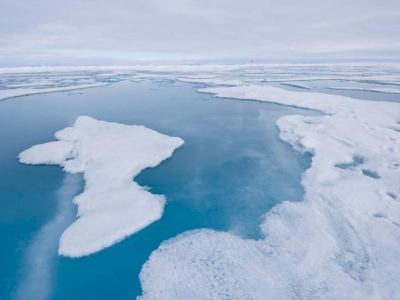During MSC 94, from 17 to 21 November 2014
IMO held t 94th Session of Maritime Safety Committee during this week, from 17 to 21 November where the Polar Code and related amendments to SOLAS adopted to make the Code mandatory.
Polar Code adoption marked a historic milestone in the Organization’s work to protect ships and people aboard them, both seafarers and passengers, in the harsh environment of the waters surrounding the two poles.
The Polar Code covers the full range of design, construction, equipment, operational, training, search and rescue and environmental protection matters relevant to ships operating in waters surrounding the two poles.
Ships trading in the polar regions already have to comply with all relevant international standards adopted by IMO, but the newly adopted SOLAS chapter XIV “Safety measures for ships operating in polar waters”, adds additional requirements, by making mandatory the Polar Code (Preamble, Introduction and Part I-A (Safety measures)).
| The Polar Code highlights the potential hazards of operating in polar regions, including ice, remoteness and rapidly changing and severe weather conditions, and provides goals and functional requirements in relation to ship design, construction, equipment, operations, training, and search and rescue, relevant to ships operating in Arctic and Antarctic waters. As well as mandatory provisions, recommendations are also include in a Part 1-B. |
The expected date of entry into force of the SOLAS amendments is 1 January 2017, under the tacit acceptance procedure. It will apply to new ships constructed after that date. Ships constructed before 1 January 2017 will be required to meet the relevant requirements of the Polar Code by the first intermediate or renewal survey, whichever occurs first, after 1 January 2018.
| Because it contains both safety and environment related provisions, the Polar Code will be mandatory under both SOLAS and the International Convention for the Prevention of Pollution from Ships (MARPOL). The MEPC is expected to adopt the Code and associated MARPOL amendments at its next session in May 2015, with an entry-into-force date to be aligned with the SOLAS amendments. |
Polar Code requirements
The Code would require ships intending to operating in the defined waters of the Antarctic and Arctic to apply for a Polar Ship Certificate, which would classify the vessel as
- Category A ship – ships designed for operation in polar waters at least in medium first-year ice, which may include old ice inclusions;
- Category B ship – a ship not included in category A, designed for operation in polar waters in at least thin first-year ice, which may include old ice inclusions; or
- Category C ship – a ship designed to operate in open water or in ice conditions less severe than those included in Categories A and B.
The issuance of a certificate would require an assessment, taking into account the anticipated range of operating conditions and hazards the ship may encounter in the polar waters.The assessment would include information on identified operational limitations, and plans or procedures or additional safety equipment necessary to mitigate incidents with potential safety or environmental consequences.
Ships would need to carry a Polar Water Operational Manual, to provide the Owner, Operator, Master and crew with sufficient information regarding the ship’s operational capabilities and limitations in order to support their decision-making process.
|
The chapters in the Code each set out goals and functional requirements, to include those covering
|
Source: IMO





























































